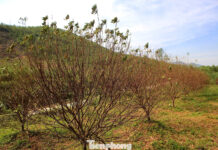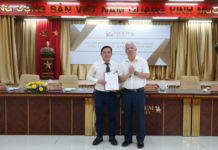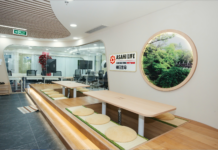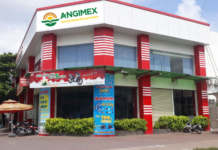The joint venture consulting firm of GTVT Construction and Investment Consultancy and TEDI has submitted a mid-term report on the planning of the Lao Cai – Hanoi – Hai Phong – Quang Ninh railway to the Vietnam Railway Administration.
Passing through 10 provinces and cities
The Lao Cai – Hanoi – Hai Phong – Quang Ninh railway is being studied to plan the entire line and the stations along the route. The starting point is Lao Cai Station (measured from the point where the railway connects to the Chinese railway), and the endpoint is Ha Long Station (belonging to the Double-Track – Ha Long railway line). The line passes through 10 provinces and cities including Lao Cai, Yen Bai, Phu Tho, Vinh Phuc, Hanoi, Bac Ninh, Hung Yen, Hai Duong, Hai Phong and Quang Ninh.
According to the consultants, the East-West corridor has a very important position and role as a gateway for trade with the world through major seaports in the Hai Phong and Quang Ninh region, as well as connecting international multimodal transportation via rail and road at the Lao Cai border gate.
The estimated short-term demand for this line is 16 pairs/day for passenger trains, 7.28 million tons/year for freight volume, and 23.28 million tons/year for converted cargo volume (including passengers and freight).

The planning of the Lao Cai – Hanoi – Hai Phong – Quang Ninh railway.
Therefore, the consultants propose the planning of a 1,435 mm gauge, electrification; single track in the short term and double track in the long term. The total length of the entire line is over 441 km. In particular, to ensure competition with the Lao Cai – Hanoi – Hai Phong – Quang Ninh highway, the consultants propose an initial design speed of 160 km/h, which can be increased to 200 km/h in the future.
On the line, there are about 56 large bridges with a total length of 47.5 km crossing major rivers such as the Red River, the Lo River, the Bach Dang River, and passing through highways such as Hanoi – Lao Cai, Hanoi – Hai Phong, Hai Phong – Quang Ninh, and national roads and some provincial roads. At the same time, there are 11 tunnels with a total length of about 10 km.
41 stations along the entire line
The consultants also propose the alignment and planning of stations when passing through provinces and cities. In addition, there are 41 stations along the entire line, including 5 main terminal stations: Lao Cai, Yen Thuong, Nam Hai Phong, Ha Long, and Cai Lan. Lao Cai Station is a terminal station for both passenger and freight trains along the Lao Cai – Hanoi – Hai Phong line, and for trains on the Lao Cai – Hanoi line. It is an international transfer station connecting with Hekou North Station on the Chinese railway.
Yen Thuong Station is a terminal station for both passenger and freight trains on the Yen Thuong – Lao Cai and Yen Thuong – Nam Hai Phong lines. In addition, Yen Thuong Station also serves as the terminal station in Hanoi for northern routes such as Hanoi – Lang Son, Hanoi – Thai Nguyen, Hanoi – Ha Long – Cai Lan.
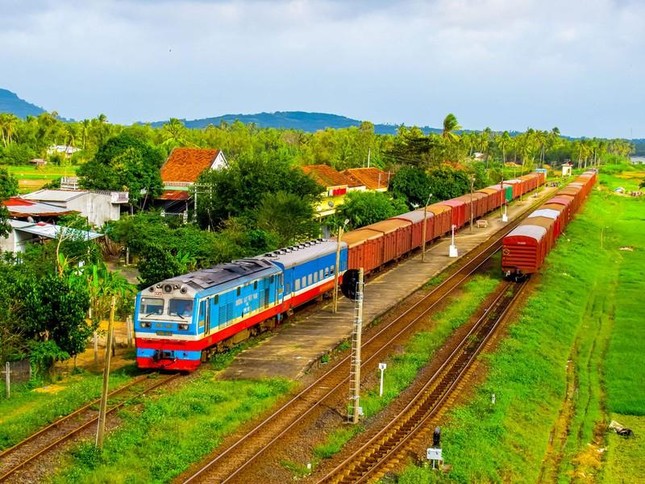
To compete with the road, the consultants propose an initial design speed of 160 km/h, which can be increased to 200 km/h in the future.
Nam Hai Phong Station is a terminal station for both passenger and freight trains along the line, similar to Lao Cai Station. It also serves as a terminal station for the short Nam Hai Phong – Ha Long – Cai Lan line.
Ha Long Station is a terminal station for a short passenger line Ha Long – Hai Phong, and Cai Lan Station is a freight terminal for the Hai Phong – Cai Lan line.
There are 5 intermediate stations along the line with a concentrated operation of passenger and cargo transport at provincial and city centers including Yen Bai, Viet Tri, Vinh Phuc, Lac Dao, Hai Duong.
The ports have stacking-operating stations including 4 ports: Lach Huyen Port, Nam Do Son Port, Nam Dinh Vu Port, Dinh Vu Port.
There are 27 passing loops stations (serving passenger and cargo transport for nearby residents) including Thai Nien (new), Son Ha, Cam Con, Bao Ha (new), Chau Que Thuong, Dong An, Tan Hop, Yen Hop, Y Can, Lenh Khanh, Ha Hoa, Thanh Ba, Phu Tho, Lap Thach, Binh Xuyen, Phuc Yen, Thach Loi, Bac Hong, Dong Anh, Trung Mau, Luong Tai, Binh Giang, Tu Ky, Tan Vien, Phong Hai, Quang Yen, Minh Khai.
According to the consultants, the new line will handle passenger transport in the East-West corridor, as well as transporting goods for localities along the line, following a mixed model of passenger and cargo transport. The existing 1,000mm gauge railway will handle the transportation of traditional bulk goods to localities along the line, following a dedicated freight line model.



